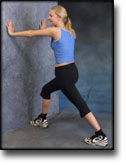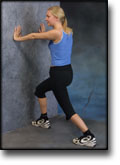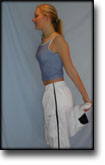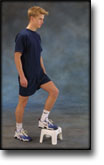|
Evaluation of outcomes in patients following surgical treatment of chronic exertional compartment syndrome in the leg.
Howard JL, Mohtadi NG, Wiley JP. Clin J Sport Med 2000 Jul;10(3):176-84.
OBJECTIVE.
To evaluate outcomes in patients who had a fasciotomy performed on their leg(s) for chronic exertional compartment syndrome (CECS).
DESIGN.
A retrospective descriptive cohort study.
SETTING.
Tertiary care sport medicine referral practice.
PATIENTS.
A consecutive series of 62 patients surgically treated for CECS from January 1991 to December 1997.
MAIN OUTCOME MEASURES.
A questionnaire was designed and developed to assess pain (using a 100 mm visual analogue scale), level of improvement, level of maximum activity, satisfaction level, and the occurrence of reoperations.
RESULTS.
Fifty patients had anterior/lateral compartment involvement, 8 patients had deep posterior compartment involvement, and 4 patients had anterior/lateral/deep posterior compartment involvement. The demographics of the 39 respondents and 23 nonrespondents were similar. The mean percent pain relief of respondents was 68% (95% CI [confidence interval] = 54% to 82%). There was no relationship between percent pain relief and the documented immediate post exercise compartment pressures. A clinically significant improvement was reported by 26 of 32 (81%) anterior/lateral compartment patients and 3 of 6 (50%) patients with deep posterior compartment involvement. Patient level of activity after fasciotomy was classified as equal to or higher than before the operation with a lesser degree of pain by 28 of 36 (78%) patients, while 8 of 36 (22%) patients reported lower activity levels than before the operation. Of the patients reporting lower activity, seven were due to exercise related pain in the post operative leg(s) and one was due to lifestyle changes. Thirty of 38 patients (79%) were satisfied with the outcome of the operation. Four of 62 patients (6%) failed the initial surgical procedure and required revision surgery for exercise-induced pain. In addition, one of these individuals also had a sympathectomy and another had a neurolysis performed at the time of revision surgery. Three of the 62 (5%) patients had subsequent operations for exercise-induced pain on different compartments than the initial surgical procedure. One individual had an unsuccessful operative repair of a posttraumatic neuroma. Postoperative complications were reported by 5 of 39 (13%) patients in the additional comments section of the questionnaire.
CONCLUSIONS.
The majority of patients surgically treated for CECS experience a high level of pain relief and are satisfied with the results of their operation. The level of pain relief experienced by patients is not related to the magnitude of the immediate post exercise compartment pressures. Despite the possibility that some patients have less favorable outcomes, experience complications, or need subsequent operations, fasciotomy is recommended for patients with CECS as there is no other treatment for this condition.
|

































